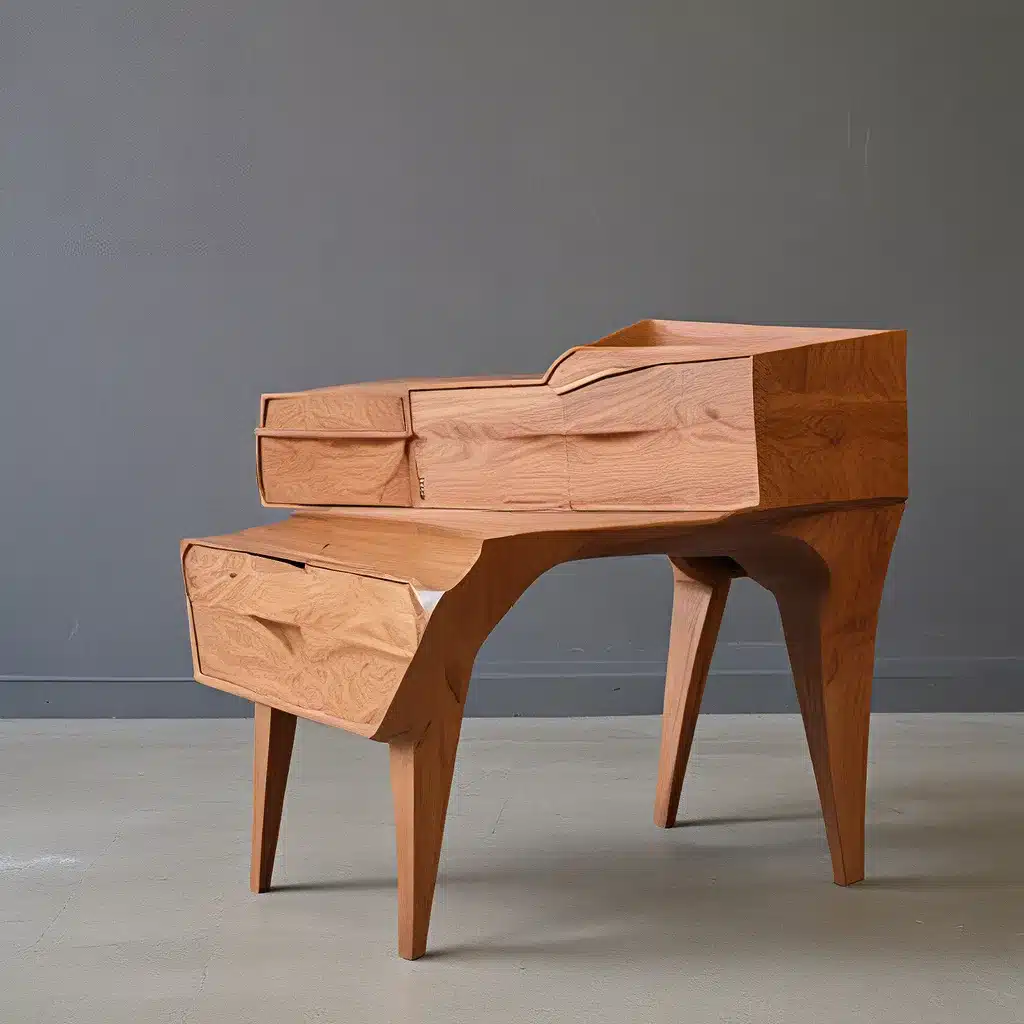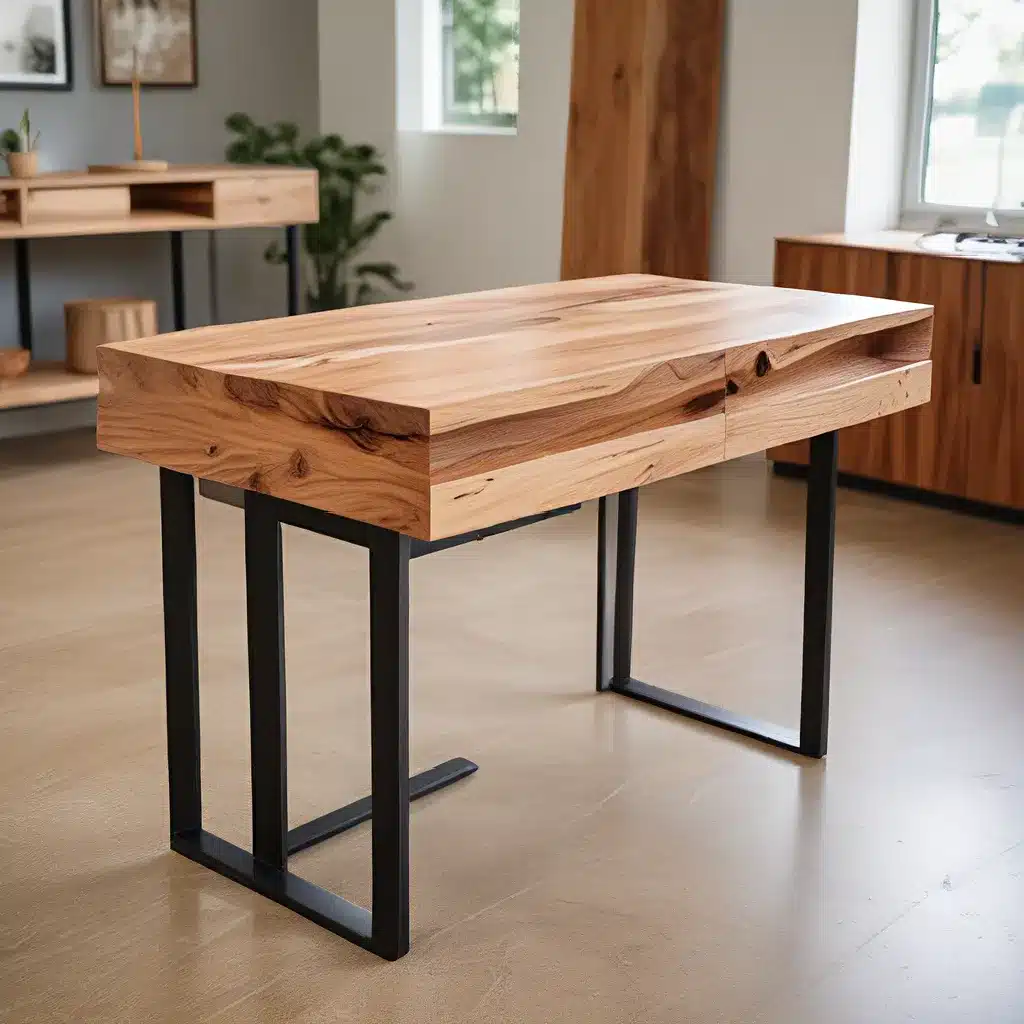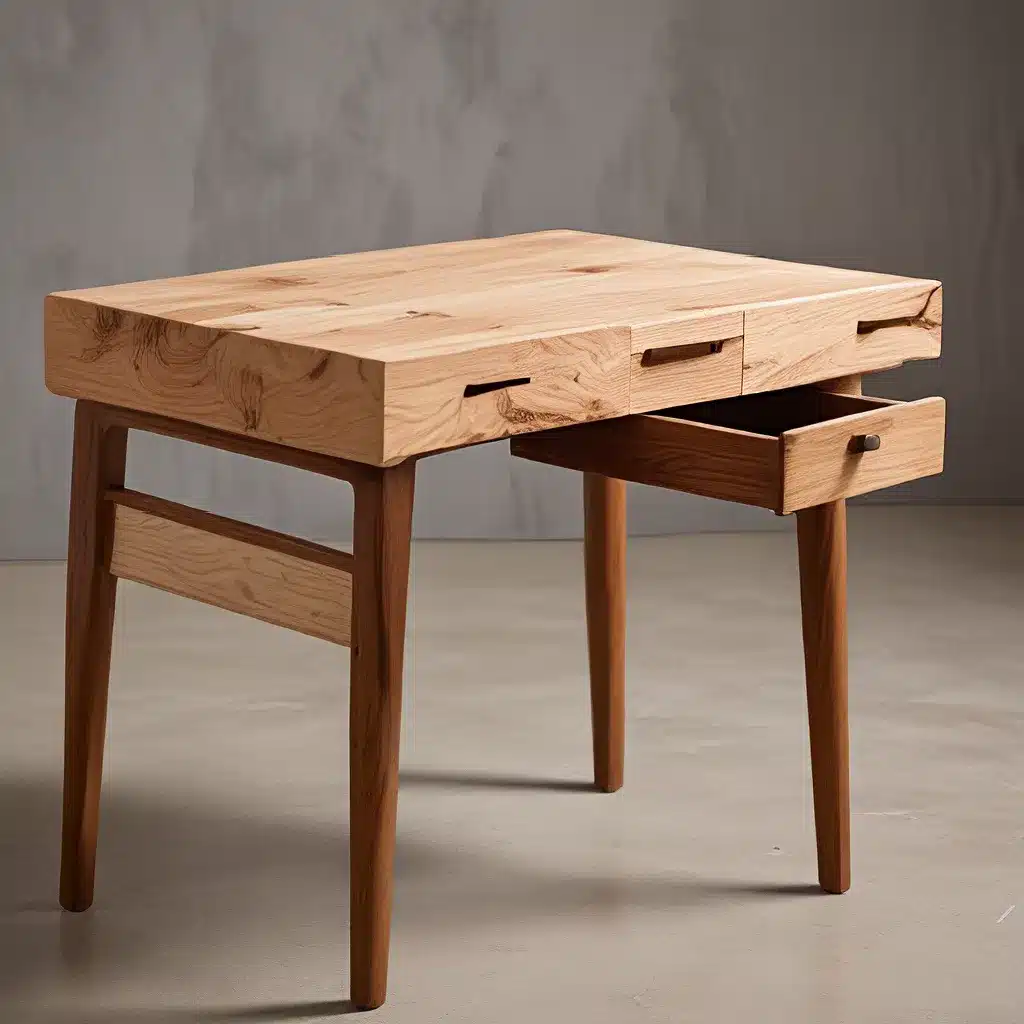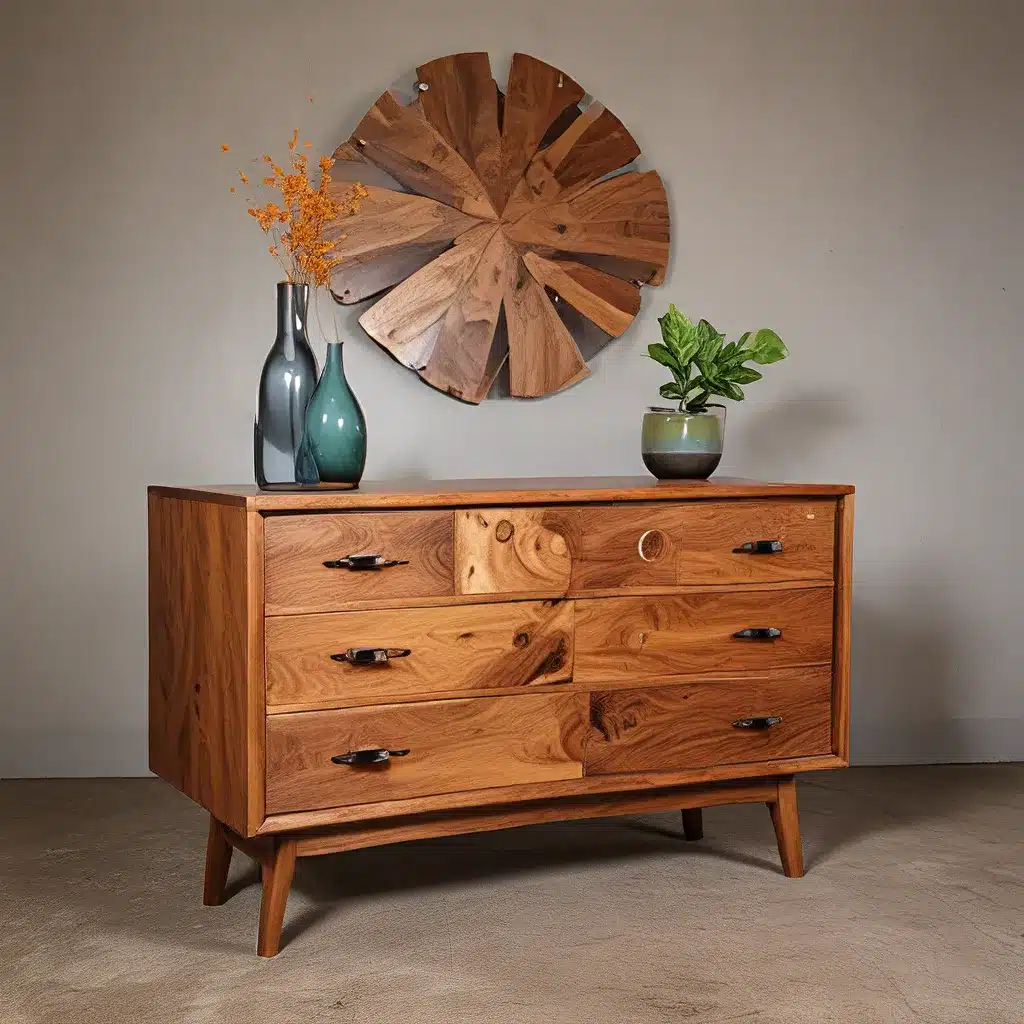
Unlocking the Mysteries of Handcrafted Furniture
As I step into my workshop, the familiar scent of freshly sanded wood and the comforting hum of my trusty bandsaw transport me to a world where creativity and craftsmanship coexist. You see, I’m not your average furniture maker – I’m a true artisan, a custodian of a centuries-old tradition that goes beyond the mere assembly of pieces. My tools, each one carefully selected and meticulously maintained, are the keys that unlock the secrets of the trade.
Let me take you on a journey through my Furniture Maker’s Toolbox, where the ordinary becomes extraordinary, and the simplest of tools transform into the marvels of modern design. After all, what good is a stunning piece of furniture if the process behind it remains shrouded in mystery? Today, I’m pulling back the curtain, revealing the techniques and the thought processes that breathe life into each of my creations.
The Dutch Tool Chest: A Portable Workshop
As one of my most prized possessions, the Dutch tool chest holds a special place in my heart. This ingenious design not only serves as a sturdy and portable storage solution but also embodies the very essence of my craft. Imagine a workshop on the go, a repository for all the tools I need to bring my visions to life, no matter where the job takes me.
The beauty of the Dutch tool chest lies in its versatility. By repurposing a simple bookshelf and applying a few clever modifications, I’ve transformed it into a masterpiece of joinery and functionality. The dovetailed construction, the tongue-and-groove backing, and the carefully crafted secret fall front – each element serves a purpose, whether it’s ensuring the stability of the chest or providing easy access to my most valuable tools.
“Building a Dutch tool chest is a fantastic exercise in many different kinds of joinery and gives you a place that you can take an entire furniture building shop’s worth of hand tools on the go.” – Anne of All Trades
The Essentials: A Curated Collection of Hand Tools
Now, let’s delve into the heart of my Furniture Maker’s Toolbox – the hand tools that have become extensions of my own hands. While the list may seem modest, I assure you that each item in my collection is a meticulously chosen and well-cared-for companion, ready to assist me in crafting the most intricate and stunning pieces.
| Tool | Purpose | Approximate Cost |
|---|---|---|
| Smoothing Plane | Effortlessly refine and flatten surfaces | $20 |
| Chisels (set of 4-6) | Precise shaping, joinery, and detail work | $10-$20 per chisel |
| Handsaw | Accurate and controlled cutting of wood | $20 |
| Hammer | Driving in nails, adjusting joints, and more | $10-$15 |
| Measuring Tools (ruler, square, etc.) | Ensuring precise dimensions and alignments | $5-$20 |
| Spokeshave | Shaping and smoothing curved surfaces | $20-$30 |
The beauty of this curated collection lies in its simplicity and versatility. With just a handful of well-chosen tools, I can tackle a wide range of tasks, from the initial shaping of raw materials to the intricate joinery and final finishing touches. These are the workhorses that have stood the test of time, the trusted companions that have enabled me to create furniture worthy of passing down through generations.
Mastering the Art of French Fitting
As I mentioned earlier, the true magic happens in the way I organize and store my tools within the Dutch tool chest. This process, often referred to as “French fitting,” is a meticulously planned exercise in efficiency and security.
Imagine a jigsaw puzzle, where each tool has its designated place, nestled snugly and securely within the chest. This methodical approach not only ensures that I can quickly locate and retrieve the necessary tools but also prevents them from jostling around during transport. “A lot of people will call this process French fitting. You’re basically making a special hole for each tool and then arranging things so that they have a very specific way that they go inside the chest.” – Anne of All Trades
By carefully measuring, cutting, and fitting each tool’s storage space, I create a bespoke solution tailored to my unique collection. This level of organization not only saves me time and frustration but also gives me peace of mind, knowing that my precious tools are safe and ready to be put to use at a moment’s notice.
The Forgotten Gems: Championing Poplar
As I’ve honed my craft over the years, I’ve come to appreciate the often-overlooked potential of certain wood species. One such unsung hero is poplar, a material that is frequently relegated to the realm of paint-grade projects or dismissed as a lesser choice. But I’m here to tell you that poplar deserves a second look.
Recently, I had the pleasure of working with a piece of rough-cut poplar, and the results were truly remarkable. As I planed it down, the wood revealed a stunning array of spalting and dark streaks, giving it an almost maple-like appearance. The grain patterns and the depth of color were simply captivating, and the final piece – a small side table – showcased the beauty of this often-overlooked wood.
“Why isn’t Poplar more popular? Most of the time I see it painted. I would really like to hear your perspective on Poplar and using it for unpainted for furniture.” – Truman
My advice? Don’t be afraid to experiment with poplar. Embrace its unpredictable nature, its ability to surprise and delight, and let it shine in your furniture designs. Who knows, you might just uncover a hidden gem that sets your creations apart from the rest.
The Evolution of a Furniture Maker
As I reflect on my journey as a furniture maker, I’m struck by the profound changes that have taken place, both within my own skills and the industry as a whole. Gone are the days when woodworking was confined to the realm of dusty workshops and small-town craftsmen. Today, the art of hand-crafted furniture is experiencing a remarkable resurgence, with more and more people seeking out the unique charm and unparalleled quality of bespoke pieces.
And at the heart of this movement is a newfound appreciation for the tools and techniques that have stood the test of time. Whether it’s the elegance of a well-executed dovetail joint or the satisfying hum of a hand-planed surface, the allure of traditional woodworking is captivating a new generation of enthusiasts.
As I’ve honed my craft over the years, I’ve witnessed firsthand the transformative power of these simple tools. What was once a mere hobby has now become a way of life, a means of expression, and a testament to the enduring beauty of handcrafted furniture. And with each new project, I find myself pushing the boundaries, exploring new design possibilities, and uncovering the hidden secrets of the trade.
So, my friends, consider this your invitation to step into the Furniture Maker’s Toolbox, to discover the magic that lies within the humble chisel and the trusty handsaw. For in this realm, the ordinary becomes extraordinary, and the possibilities are as limitless as your imagination.








